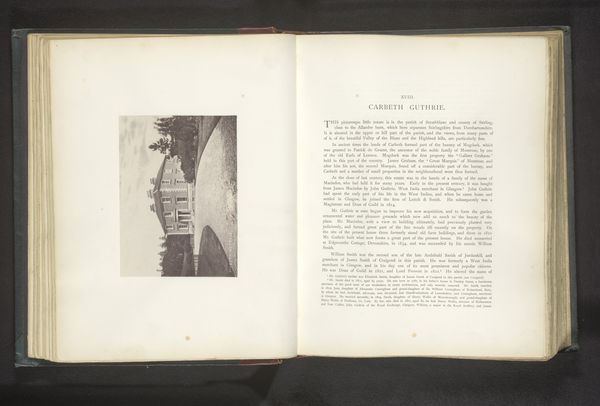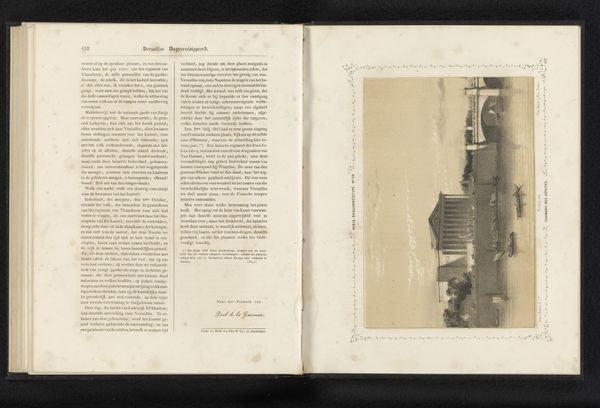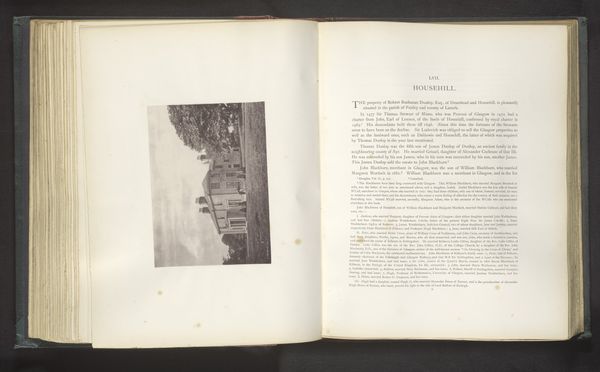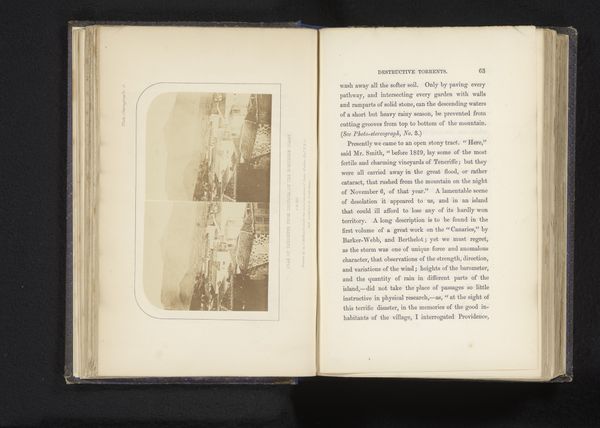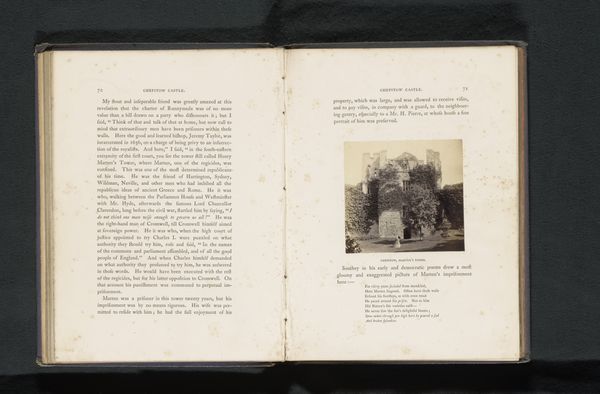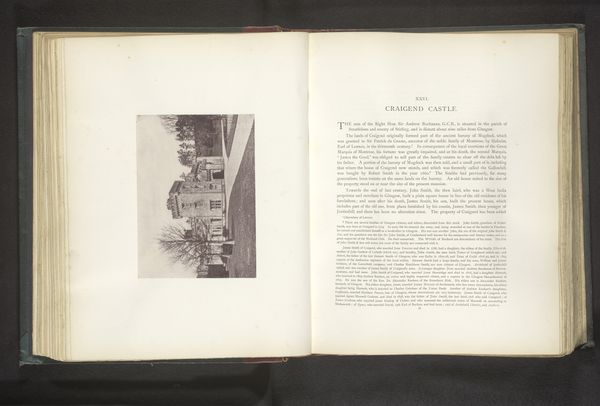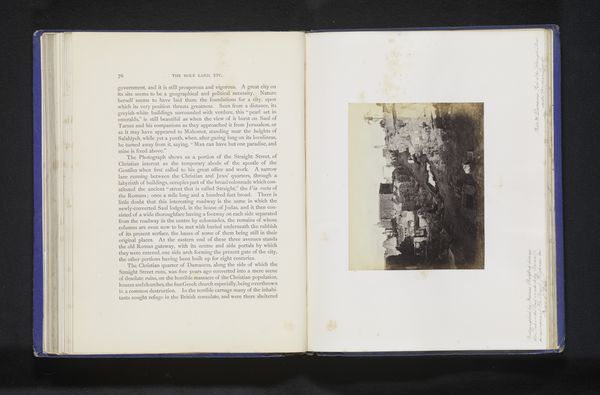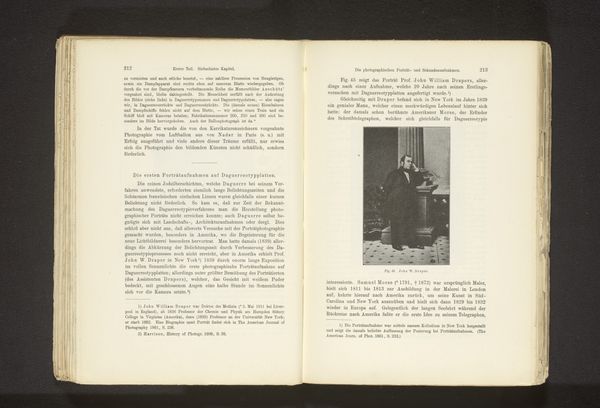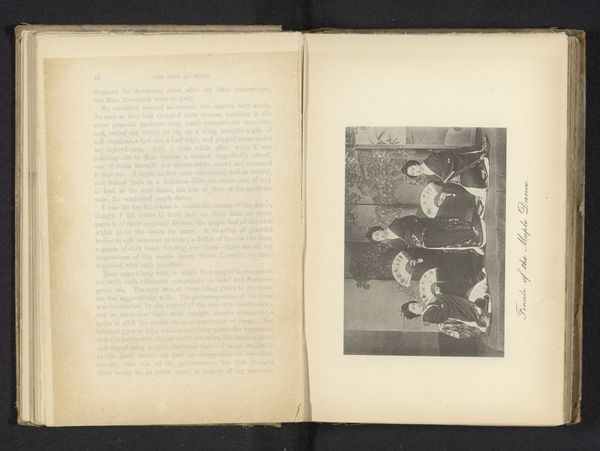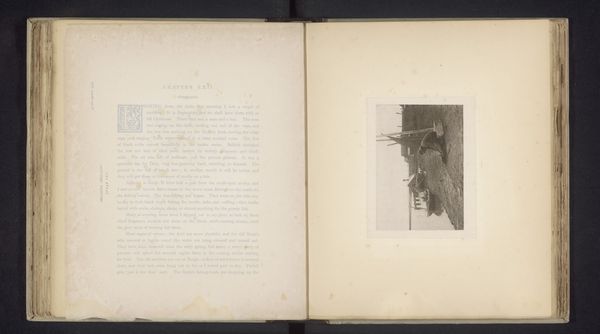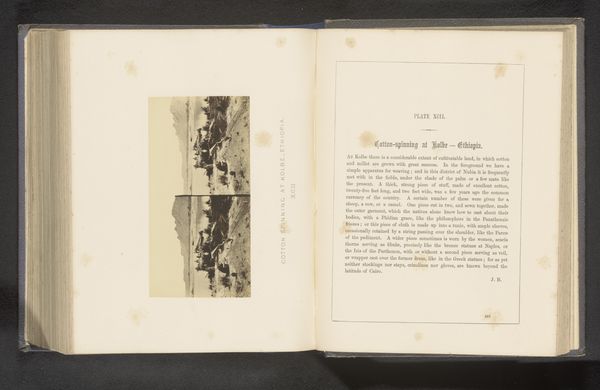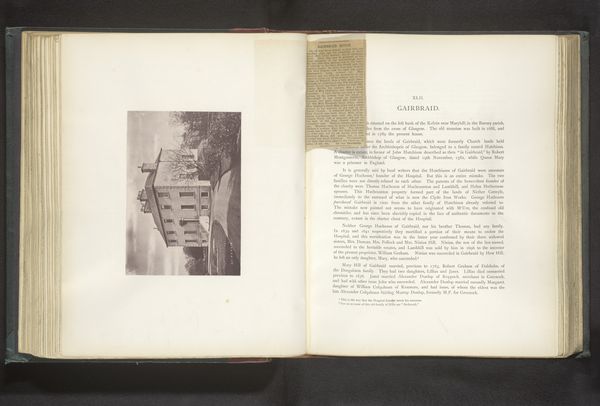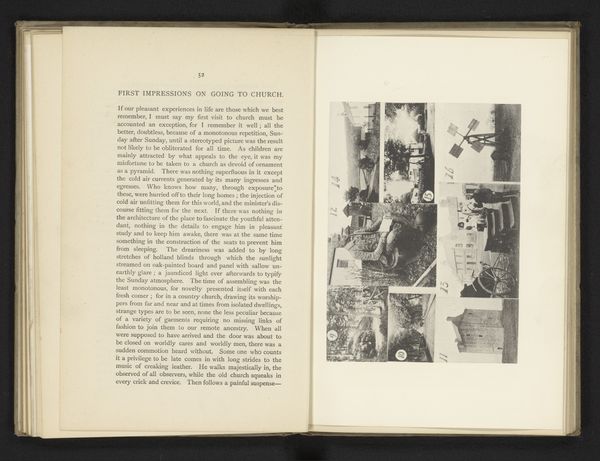
print, photography
# print
#
landscape
#
photography
#
islamic-art
Dimensions: height 119 mm, width 182 mm
Copyright: Rijks Museum: Open Domain
Editor: So this photograph, “Tomb of Mu'in I Chishti at Ajmir,” from before 1893, shows what appears to be a serene, almost ethereal landscape. It’s part of a book, there's text visible on the right. What kind of symbolism or visual language do you see at play here? Curator: The book format itself holds significance; the image exists within a larger narrative, adding layers to its meaning. Observe how the photographer frames the tomb—does it feel like a sacred space, set apart? The muted tones and slightly blurred details add to its timeless, almost dreamlike quality. What cultural memory does this image invoke for you? Editor: I feel a sense of history, but also a sense of remove, like I am observing a tradition from afar. The fact that it's in a book makes it feel doubly removed from lived experience. Curator: Exactly. Consider the visual language—the dome, for instance. Domes in Islamic architecture represent the heavens and are loaded with cosmological symbolism. They’re visual anchors, drawing our eye and suggesting a connection to something greater than ourselves. What emotional weight does that give to the image, in your view? Editor: A kind of reverence, maybe? It almost feels staged, somehow. The light and shadow create such a stark contrast. Curator: Think of shadow not merely as absence of light, but as a presence—a marker of time, of the ephemeral nature of earthly existence contrasted against the permanence represented by the tomb itself. This starkness can underscore spiritual longing, an attempt to connect with something beyond. The landscape works in tandem. Does the foliage feel alive, untamed, or manicured and ordered? What emotions do the trees evoke in contrast with the solidity of the tomb? Editor: They appear more free-flowing in contrast, drawing focus toward the central building. It shows us the relationship between people and place. I never considered a photograph like this could carry so much cultural information. Curator: Photography, even then, wasn't just about recording; it was about interpreting and conveying. It’s fascinating to peel back those layers.
Comments
No comments
Be the first to comment and join the conversation on the ultimate creative platform.
